Top 10 Mistakes in Shapewear Purchasing, Have You Been Hit?
As a shapewear buyer, accurate pit avoidance is the only way to select quality products for customers and build a solid foundation for business. Below are the top 10 misconceptions to be wary of when sourcing!
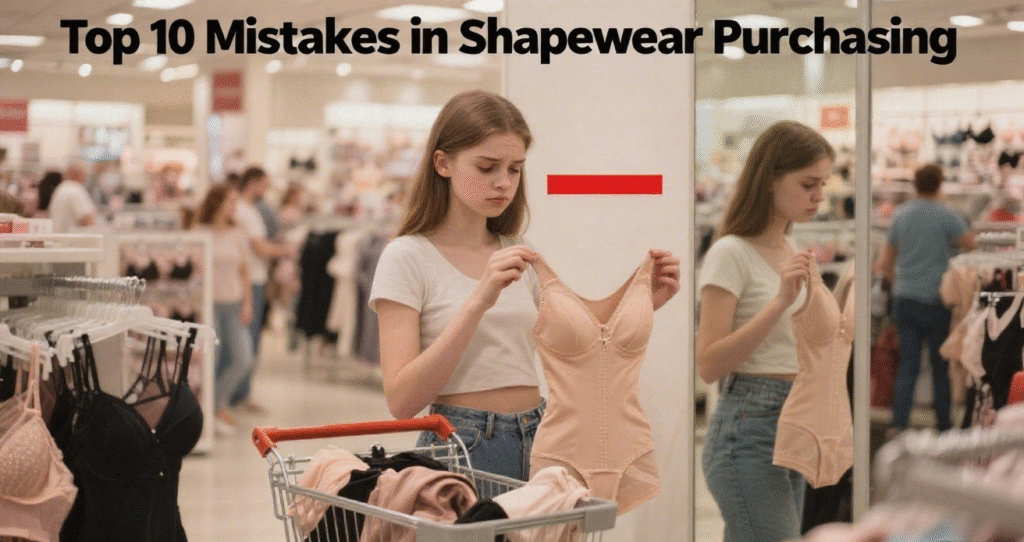
Table of content
| Myth 1: Only look at the price, ignoring the quality |
| Myth 2: Ignore the target market demand |
| Myth 3: Blindly follow the trend of explosive |
| Myth 4: “shaping principle” half-understanding |
| Myth 5: Ignoring the sewing process and detailing |
| Myth 6: Neglecting the needs of different scenes |
| Myth 7: Over-reliance on suppliers’ “verbal commitment” |
| Myth 8: Not paying attention to size coverage and inclusiveness |
| Myth 9: Ignore the added value of branding and packaging |
| Myth 10: Ignore the timeliness of market feedback follow-up |
On the track of shapewear trade and purchasing, product selection mistakes may make business passive. As a shapewear buyer, accurate pit avoidance is the only way to select quality products for customers and build a solid foundation for business. Below are the top 10 misconceptions to be wary of when sourcing!
Myth 1: Only look at the price, ignoring the quality
Some buyers are dominated by cost thinking, blindly chasing low-priced sources. However, shapewear is a close to wear, emphasize the functionality of the product, behind the low price is often poor quality fabric (such as the use of non-breathable, easy to pilling chemical fiber, long-term wear caused skin problems), process rough (sewing line is easy to open, shaping the structure of the irrational design). Such shapewear products flow to the market, will be due to high return rate, poor evaluation, damage to buyers and brand reputation, subsequent after-sales cost is hidden “big pit”.
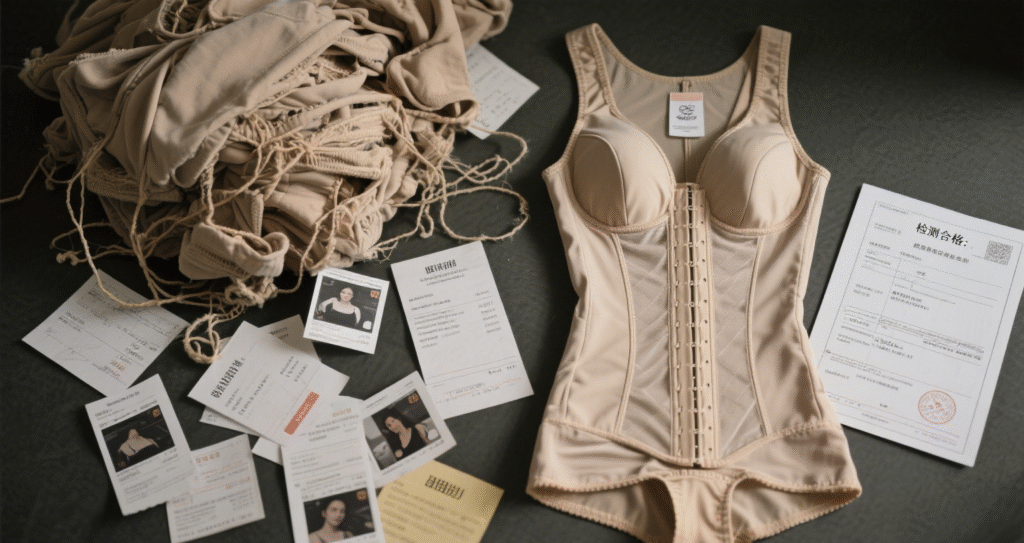
Myth 2: Ignore the target market demand
Different regions and consumer groups have different needs for shapewear. For example, the European and American markets prefer high-intensity shaping, large-size products, focusing on postpartum repair, body management; the Asian market may favor light pressure, daily wearable shapewear styles. If the target market is not researched before purchasing (such as the pursuit of comfort for Asian consumers purchasing European and American high-intensity bondage models), the product will be “not suited to the local conditions” lagging behind, and the backlog of inventory.

Myth 3: Blindly follow the trend of explosive
Industry explosion of heat, but buyers need to calm judgment. Some of the explosive is a short-term marketing gimmick, the lack of long-term market vitality; there are also some of the explosive design complexity, scarcity of raw materials, high procurement costs and supply chain instability. Should screen both popular elements and classic attributes, the supply chain is mature style, to protect the continuous supply and profitability.
Myth 4: “shaping principle” half-understanding
Shapewear by pressure distribution, fabric rebound to achieve shaping, high-quality products with uniform pressure and ergonomic. However, some buyers do not understand the doorway, mistakenly selected pressure over-concentration (such as the abdomen is too tight, legs obvious strangulation) or pressure is not enough (wear and do not wear the body of the product without difference). Before purchasing, it is necessary to communicate with the supplier in depth about the design logic, and even send the pressure distribution data for inspection to ensure that the product really has shaping value.
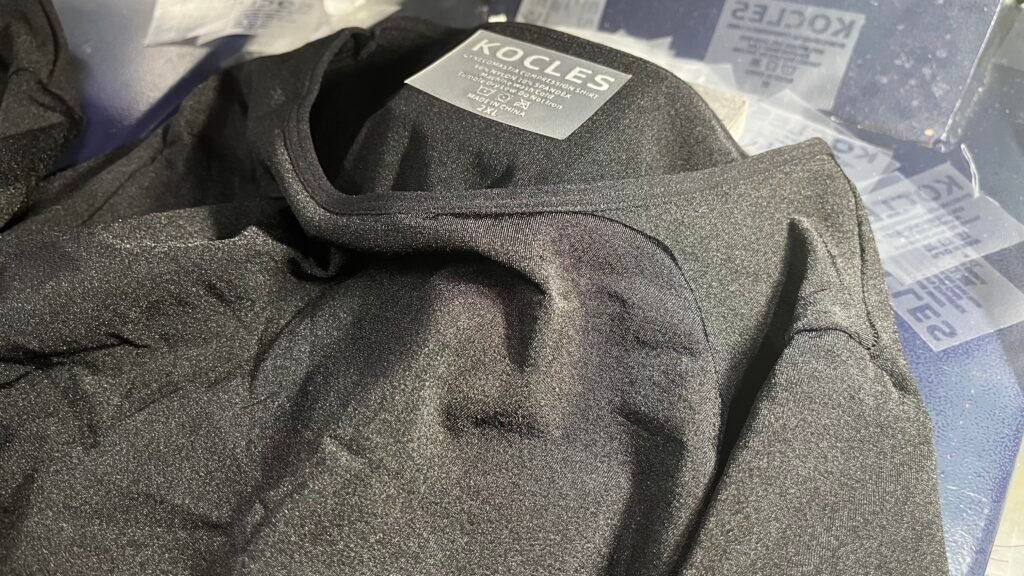
Myth 5: Ignoring the sewing process and detailing
The sewing process of shapewear directly affects the wearing experience and durability, but it is often overlooked by buyers. High-quality products will use four-needle six-line edging process to reduce the discomfort caused by friction between the fabric and the skin, and the sewing line is flat and not easy to roll the edges; while poor-quality products may be sewn with an ordinary single line, wash a few times on the threads off, the corners of the warping problem. In addition, like the waist head anti-slip strip paste firmness, the smoothness of the row of buttons and other details, if not properly handled, will make consumers feel “cheap”. Procurement needs to carefully check the sewing details of the sample, and even simulate multiple wear and tear, washing scenes, test the stability of the process, to avoid affecting the product reputation due to detail defects.
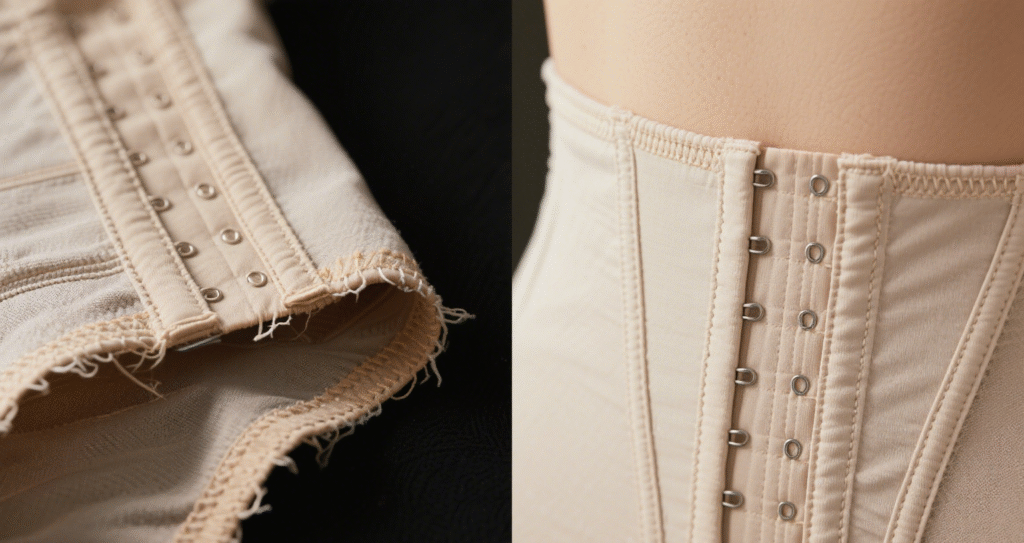
Myth 6: Neglecting the needs of different scenes
Shapewear can be used for daily commuting, sports and fitness, postpartum repair and other scenarios. If purchasers mix them up, such as purchasing non-sweat and non-breathable shapewear for the sports scene, the products will not meet the needs of consumers and will be criticized as “unprofessional”. The product selection should be segmented by scene and supplemented with product lines that are suitable for different life scenarios, so as to increase the repurchase rate of customers.
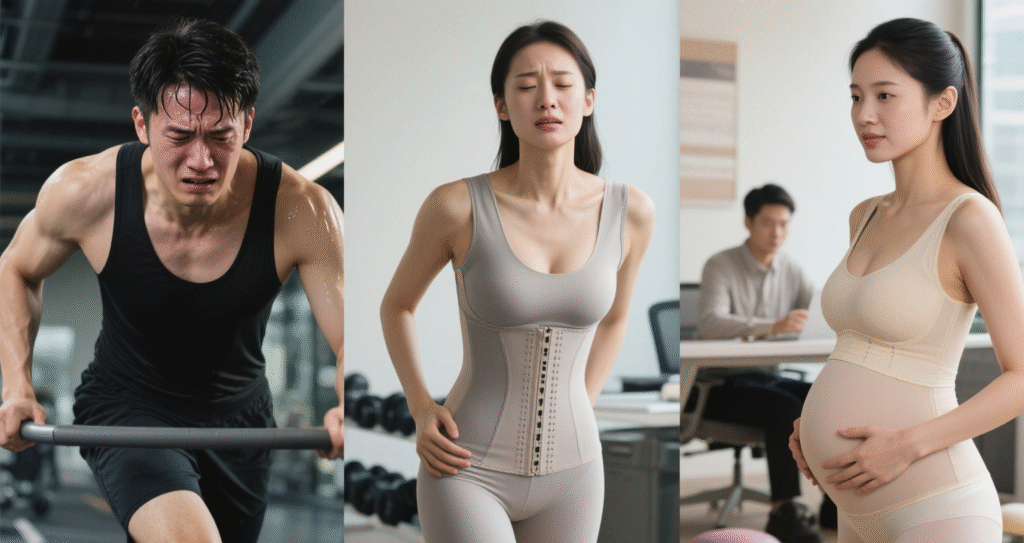
Myth 7: Over-reliance on suppliers’ “verbal commitment”
In the procurement process, some suppliers exaggerate the advantages of their products (e.g., claiming that the fabrics are “24-hour anti-bacterial” and “super-high elasticity and no deformation”) in order to get orders. ). Purchasers who do not require the provision of test reports, samples of the actual test, easy to find that the goods are not the same after delivery. Be sure to ask for authoritative test data, small batch test order, with the actual experience to verify the supplier’s commitment.
Myth 8: Not paying attention to size coverage and inclusiveness
Shapewear is geared towards multiple body shapes, so if you only choose regular sizes when purchasing, you will miss out on groups such as plus-size, petite (petite), etc. The current consumer market emphasizes the importance of “size coverage”. Nowadays, the consumer market emphasizes “body inclusiveness”, and a perfect size system can cover more customers and enhance product competitiveness. Before purchasing, we need to research the target group’s body data and ask suppliers to provide full-size programs.
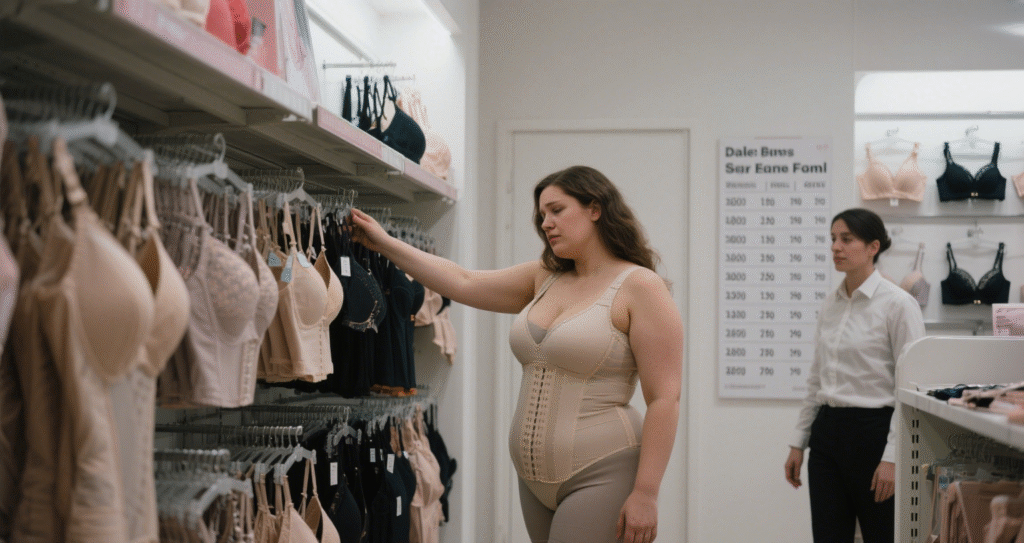
Myth 9: Ignore the added value of branding and packaging
Purchasers often focus on the product itself, and pay little attention to branding and packaging. High-quality shapewear with simple and advanced packaging, clear brand story (such as “focus on women’s comfort and shaping ten years”), can enhance the product premium and recognition. When selecting products, suppliers can be asked to provide customized branding and packaging design support to empower downstream sales.
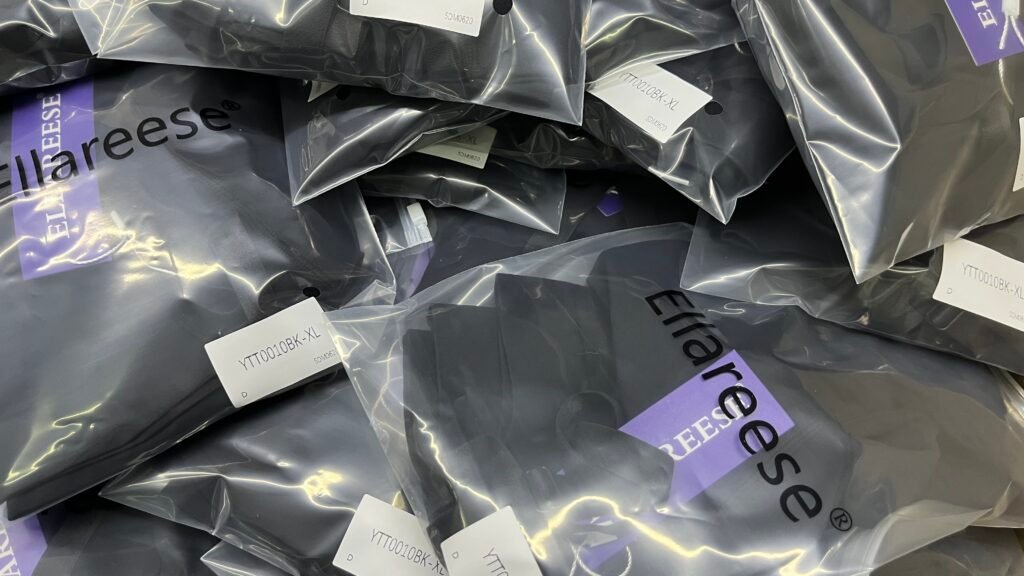
Myth 10: Ignore the timeliness of market feedback follow-up
Some buyers no longer track the market feedback of products after completing a batch of procurement, resulting in the inability to identify problems in a timely manner. For example, a certain type of shapewear in the early sales of sales is good, but as the weather turns hot, consumers began to feedback “lack of breathability”, if the buyer did not collect this type of information in a timely manner, and still according to the original standard procurement of the next batch, it will result in a new inventory backlog. Purchasers should establish a market feedback collection mechanism, regularly communicate with downstream retailers, pay attention to user evaluations on e-commerce platforms, and communicate with suppliers to adjust product parameters in a timely manner in response to the common problems of feedback (e.g., tight sizing, poor shaping effect of a certain part of the body) to make the purchased products always match the changes in market demand.
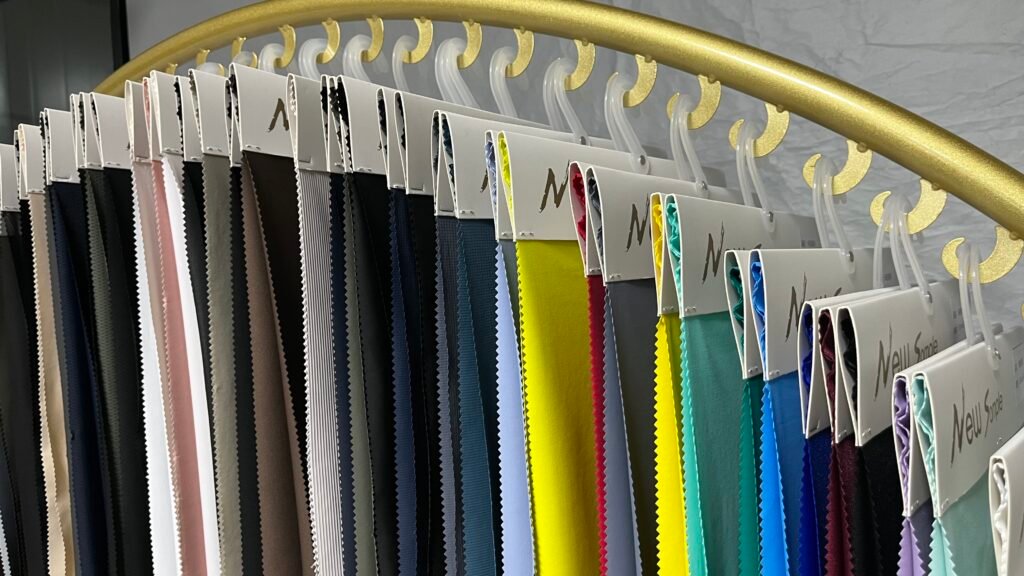
Shapewear procurement, each step is related to the success or failure of the business. Avoid these ten misunderstandings, more accurate product selection, more solid supply chain, in order to stand firm in the shapewear market, so that high-quality products become a win-win bridge between buyers and customers. All purchasing colleagues, quickly self-check the business whether to step on the pit, timely adjustment of strategy, for the market delivery of truly valuable shapewear products!
